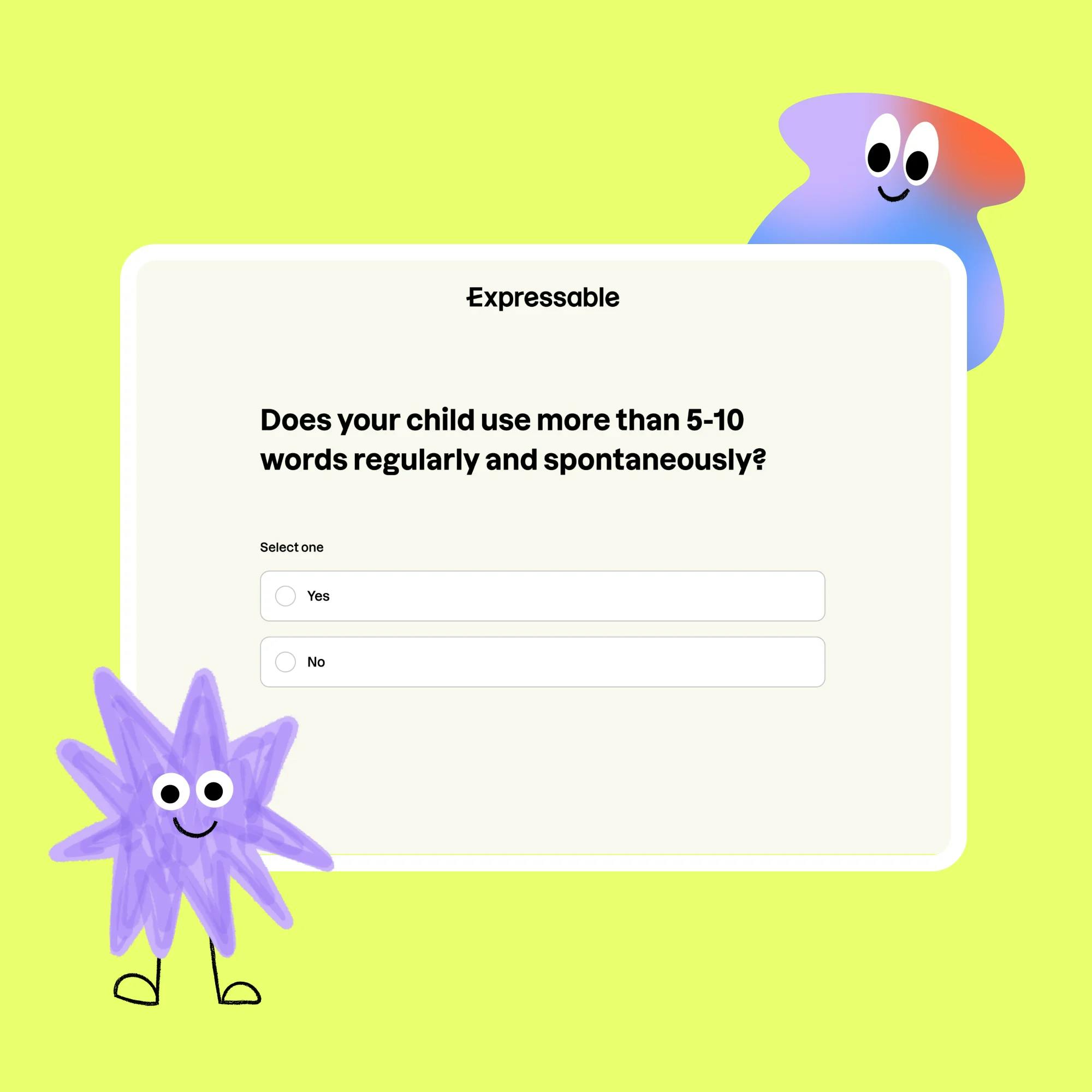
How Childhood Apraxia of Speech Is Diagnosed and Treated
 Abby Barnes, M.S., CCC-SLP
Abby Barnes, M.S., CCC-SLP
Childhood apraxia of speech (CAS) is a motor-planning disorder that can make it challenging to speak clearly. A child with apraxia may know exactly what they want to say. However, their brain struggles to communicate with the muscles in their mouth to tell them how to move in order to make the right sounds.
While childhood apraxia of speech does have specific characteristics, some symptoms can look similar to other speech and language disorders. This can make diagnosis challenging.
Here we’ll cover how childhood apraxia of speech is diagnosed. We’ll also explain how speech therapy can help childhood apraxia of speech and how to find an experienced speech therapist. With the right type and frequency of speech therapy, many children with apraxia can learn to speak well and communicate clearly and confidently.


How is childhood apraxia of speech diagnosed?
CAS is diagnosed by a speech-language pathologist, also known as a speech therapist, after an evaluation. An evaluation for childhood apraxia of speech has several parts.
First, the speech therapist will engage with your child to get a better understanding of their speech and language. If appropriate, they will prompt your child to talk about things they like in order to get a sense of the sounds your child can and can’t say.
The evaluation will include an oral-motor exam. The speech therapist will assess your child’s lips, tongue, jaw, and palate, making sure the structure and strength of each looks normal. If the therapist sees any weakness or structural abnormalities, like a tongue-tie, this could be contributing to your child's speech issues, rather than apraxia.
The speech therapist will provide an articulation test to see how your child produces all consonants and vowels. The test may be given a couple of times in order to assess a child’s performance from one testing experience to another. One of the hallmark characteristics of apraxia of speech is inconsistent errors. For example, a child may say the word “butterfly” one way one time, and another way the next time. Multiple attempts during testing can help a speech therapist catch these inconsistent productions.


What are the main symptoms of childhood apraxia?
Apraxia can look different in different people, but other key characteristics or symptoms of childhood apraxia of speech include:
Difficulty combining sounds, syllables, or words
Odd or inappropriate stress on words when speaking
Inconsistent speech errors
Mistakes in vowel production
Groping movements of the mouth when trying to produce a word
As part of the evaluation, the speech therapist will ask you to complete a packet of questions relating to your child’s medical and developmental history. This is important when making a diagnosis. After the evaluation is done, the speech therapist will analyze the information they’ve collected and make a diagnosis. This involves ruling out other speech and language disorders to determine if CAS is indeed present.


Speech therapy for childhood apraxia of speech
Currently, there are no definitive studies on the long-term outcomes of children with apraxia. But we do know that consistent speech therapy, held one-on-one with a speech therapist and supported by the child’s caregiver, provides the best opportunity for improvement. A child isn’t likely to “grow out” of apraxia without intervention.
If your child is diagnosed with apraxia of speech, your speech therapist will create a treatment plan that includes specific, sound-related goals. Therapy will focus on frequent practice and repetition of these sounds. The speech therapist will monitor and track the child’s percentage of accuracy with each goal.
Speech therapists use different techniques to help children learn to produce sounds and words more clearly. These may include prompts such as:
Visually showing the child how to produce each sound with their mouth. For example, a speech therapist may say words at the same time as the child.
Tactile cues, such as touching the lips to remind the child to close their lips for the /m/ sound
Having the child listen to sound production and determine if it was correct or incorrect
You can read more about how Expressable evaluates and treats childhood apraxia of speech in our treatment guide.


Just as symptoms of apraxia vary, so does progress. The treatment techniques that work for one child may not work for another, and each person progresses at their own pace.
Some children with very severe CAS may need to find alternative ways to communicate and express their thoughts. These methods can include:
Sign language
Using a notebook with pictures or written words
An alternative or augmentative communication device, such as a communication board or a portable tablet that writes and produces speech
These assistive tools may not be needed long-term. However, using these modes of communication while working with your speech therapist can help promote verbal skills, while also decreasing any frustration your child is feeling.


How to find a speech therapist for childhood apraxia of speech
There are several ways to find a speech therapist who treats childhood apraxia of speech. The first is to reach out to any friends or acquaintances who have firsthand experience with speech therapy. Word-of-mouth recommendations are always helpful.
You can also contact your child’s pediatrician. They likely have a list of speech therapists that they recommend. For any therapist you’re considering, call their office and ask about their background in treating childhood apraxia of speech. While CAS is within the scope of practice for all speech therapists, some therapists have more experience than others in this area. Search for online reviews of the speech therapist as well.
Apraxia Kids offers an online registry of speech therapists across the United States and Canada who have experience treating children with apraxia of speech. You can search by location to try to find a speech therapist near you. Along those lines, consider the logistics of your child’s speech therapy sessions. How far is the commute? Do the available session times work with your schedule? Many families have found online speech therapy to be a more convenient choice. Many academic studies have shown that online speech therapy is just as impactful and effective as therapy provided in person.


Once you’ve found a speech therapist, prepare any questions you have for them. You can call before your child’s evaluation, or bring your questions to the evaluation. Speech therapists know this can be an uncertain and anxious time for families. Your therapist will work to answer your questions and assure you of their plan for your child’s treatment.
Don’t wait to begin the process of getting your child into speech therapy if you have concerns about their communication. The more quickly you can start therapy, the faster they can begin making progress!
How Expressable Can Help
Concerned your child isn't reaching age-expected milestones? Looking for communication support from a professional? Expressable is a national online speech therapy practice serving children and adults. We treat all major areas of communication and feeding, offer flexible hours including evenings and weekends, and accept most major health insurance plans. We’re proud to have earned more than 3,000 5-star reviews from our clients (4.9/5 average).
Our therapy model is centered on parent and caregiver involvement. Research proves that empowering caregivers to participate in their loved one’s therapy leads to better outcomes. That’s why we combine live, 1-on-1 speech therapy with personalized education and home practice activities for faster progress.
Communication is more than words. It’s how we share how we feel and show who we are. We’re here to help you or your child do just that.









